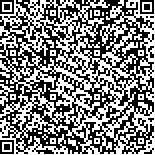| 摘要: |
| [摘要] 目的 探讨左心室假腱索(LVFT)类型与频发室性早搏的关联性。方法 选取该院2016-01~2018-06经超声心动图检出的149例LVFT患者为研究对象,根据其是否合并频发室性早搏分为A组(LVFT合并频发室性早搏组,28例)和B组(LVFT无合并频发室性早搏组,121例)。收集两组患者的一般临床资料,应用二维超声心动图多角度观察并记录LVFT的厚度、连接方式及走形。采用二元Logistic回归分析频发室性早搏发生的影响因素。结果 以LVFT厚度1型为参照,LVFT厚度3型是发生频发室性早搏的危险因素(OR=4.456,P=0.033);以LVFT连接方式1型为参照,LVFT连接2型是发生频发室性早搏的危险因素(OR=12.594,P=0.024);以LVFT走形1型为参照,LVFT走形2型是发生频发室性早搏的抑制因素(OR=0.185,P=0.002)。较长的心悸病程是发生频发室性早搏的危险因素(OR=1.203,P=0.013)。结论 当超声心动图提示LVFT特征为肌型、斜型或与室间隔夹角>30°时,患者更容易发生频发室性早搏,临床工作中应予以重视,选择更合理的治疗方案。 |
| 关键词: 左心室假腱索 室性早搏 超声心动图 心电图 |
| DOI:10.3969/j.issn.1674-3806.2020.01.07 |
| 分类号:R 541.7 |
| 基金项目:国家自然科学青年基金项目(编号:81701734);常州市科技项目(编号:CJ20190086) |
|
| Study on correlation between types of left ventricular false tendons and frequent ventricular premature beats |
|
GE Zhi-xiang, ZHU Yun, YANG Pan, et al.
|
|
Echocardiography Room, the First People′s Hospital of Changzhou Affiliated to Soochow University, Jiangsu 213003, China
|
| Abstract: |
| [Abstract] Objective To explore the relationship between the types of left ventricular false tendons(LVFT) and frequent ventricular premature beats. Methods One hundred and forty-nine patients with LVFT who were detected by echocardiography in our hospital from January 2016 to June 2018 were enrolled in this study. According to whether they were complicated with frequent ventricular premature beats, the patients were divided into group A(LVFT complicated with frequent ventricular premature beats group, n=28) and group B(LVFT without frequent ventricular premature beats group, n=121). The general clinical data of the patients in the two groups were collected, and two-dimensional echocardiography was used to observe and record the thickness, connection modes and shapes of the LVFT. The influencing factors of frequent ventricular premature beats were analyzed by binary Logistic regression. Results With LVFT thickness type 1 as the reference, LVFT thickness type 3 was a risk factor for frequent ventricular premature beats(OR=4.456, P=0.033). With LVFT connection type 1 as the reference, LVFT connection type 2 was a risk factor for frequent ventricular premature beats(OR=12.594, P=0.024). With LVFT shape type 1 as the reference, LVFT shape type 2 was a inhibiting factor for frequent ventricular premature beats(OR=0.185, P=0.002). Longer course of palpitations was a risk factor for frequent ventricular premature beats(OR=1.203, P=0.013). Conclusion When echocardiography suggests that LVFT is characterized by muscular type, oblique type or an angle greater than 30° with the ventricular septum, the patients are more likely to have frequent ventricular premature beats, which should be paid more attention to in clinical work and more reasonable treatment options should be selected. |
| Key words: Left ventricular false tendons(LVFT) Ventricular premature beat Echocardiography Electrocardiogram |

